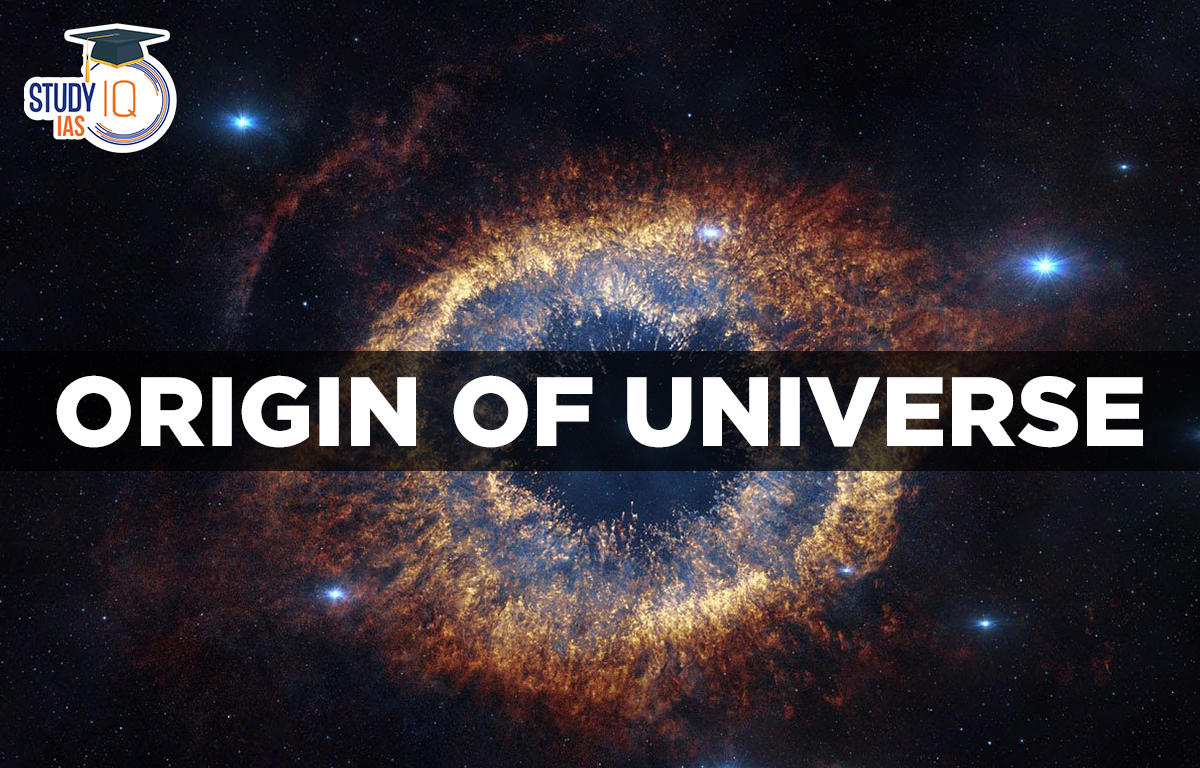Table of Contents
Origin of the Universe
The universe contains all of the matter and energy that exists in our environment. The universe contains millions of galaxies. Each galaxy has millions of stars, and there are stars with several planets revolving around it. Our Solar System is also part of the Milky Way galaxy and consists of eight planets and their moons in orbit around the Sun. Our solar system also contains smaller bodies like an asteroid, meteoroids, and comets. In this article, we shall try to understand the Evolution and Origin of the Universe, our solar system, and the basics of geography.
Origin of the Universe Theories
The study of the Universe started back in ancient times. During the Golden Age of Greek civilization, people held two different views on the Universe- the geocentric view and the holocentric view.
1. Geocentric View
Geocentric means earth-centric. According to this view, the earth was at the centre of the universe. The world was considered a spherical, motionless body with a transparent hollow sphere surrounding it. This hollow sphere was known as the celestial sphere. The stars were located in this sphere, and they moved around the earth daily. Aristotle and Ptolemy supported this view of the Universe.
2. Heliocentric View
Aristarchus was the first Greek philosopher to put forward a heliocentric, i.e., sun-centred view of the universe. According to this view, the Sun is at the centre of the universe, and the Earth revolves around it. However, this view was not popular back then.
3. Modern Astronomy
The academic contributions by Nicolaus Copernicus, Johannes Keppler, Galileo Galilei, and Sir Isaac Newton have been constructive in our understanding of the Universe. They were called the “founders of modern astronomy.” Copernicus upheld the heliocentric view of the universe and reconstructed the solar system with Sun at the centre and all the planets orbiting around it.
Kepler proved that the orbit of each planet around the Sun is elliptical. Galileo also supported Copernicus’s theory of the sun-centred solar system. Sir Isaac Newton was the first to explain why planets were moving around the Sun. He was credited with conceptualizing the force of gravity. He put forward the law of universal gravitation. It states that every particle attracts every other particle in the universe with force directly proportional to the product of their masses and inversely proportional to the square of the distance between their centres.
Big Bang Theory
Big Bang Theory: The Big Bang created our universe by exploding space itself. Space expanded, the universe cooled, and the simplest elements formed, beginning with extremely high density and temperature. Gravity drew matter together gradually to form the first stars and galaxies. According to Big Bang cosmology, the universe’s chronology describes the universe’s history and future.
Origin of the Universe UPSC
The Big Bang theory is the dominant cosmological model that explains the existence of the observable universe from its inception to its subsequent large-scale evolution. The model describes how the universe expanded from a high density and temperature starting point and provides a comprehensive explanation for a wide range of observed phenomena.
The Big Bang Theory is a critical concept for the UPSC science and technology section. Both Indian and global scientists are conducting extensive research in this field to determine how the universe began billions of years ago. In this article, you will learn about the various views of the origin of the earth in a nutshell in preparation for the UPSC IAS exam.





















 WhatsApp
WhatsApp